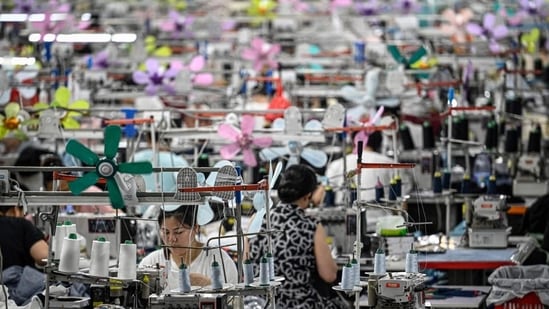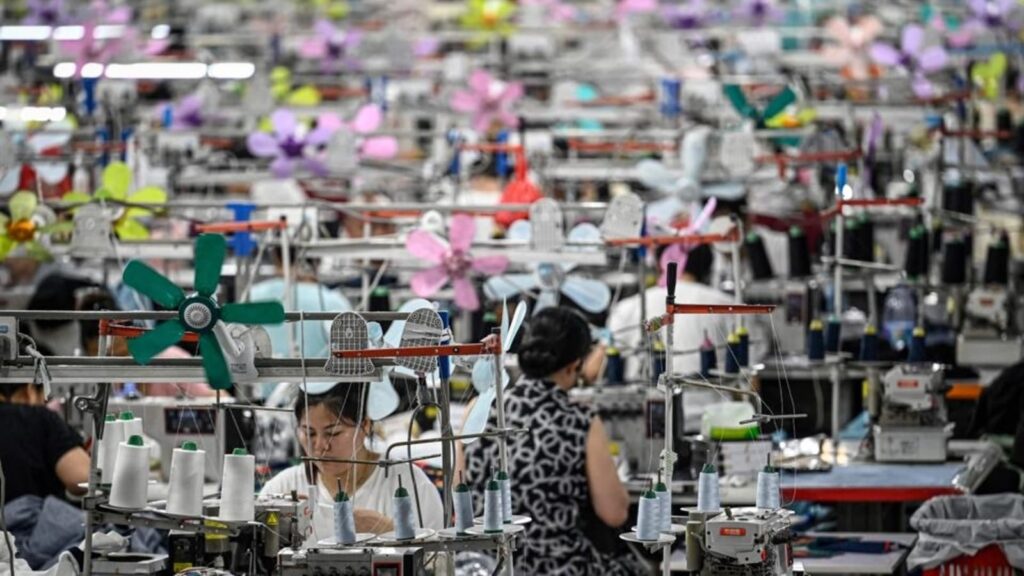Fast fashion is the trend of producing clothes quickly and cheaply to capture current trends. These clothes are bought for appearance rather than durability, so they are worn only occasionally. Although fast fashion is a trend, it is also a symptom of the modern lifestyle of overconsumption, which takes a toll on the environment. Currently, an estimated 100 billion pieces of clothing are produced annually, but most of them end up in landfills within a year.

In the past, clothes were worn, washed, Some have even been repaired over the years.As the world population grows and more people are able to buy more clothes (and not just for Diwali, Eid and Durga Puja), we are faced with a huge increase in textile waste.
The fashion industry produces a huge amount of clothing, which requires many resources. The production process requires water, which is often heated and requires energy. This energy comes from fossil fuels, which leads to greenhouse gas emissions. In addition, wastewater containing chemicals from the dyeing and finishing process pollutes the environment if not properly treated.
Producing just one cotton T-shirt requires over 2,700 litres of water – roughly the amount of water one person drinks in two and a half years. Clothing production also releases water laden with harmful chemicals from dyes and processes into the environment. The industry is responsible for 20% of global water waste.
The fashion industry is responsible for 10% of global carbon dioxide emissions and exacerbates climate change. Synthetic fabrics contribute significantly to marine plastic pollution through microplastics, tiny particles that live on the ocean floor. Clothing waste also contributes to climate change: incinerating clothes releases harmful air pollutants and clothes in landfills emit methane, a potent greenhouse gas.
Synthetic fibers have revolutionized the textile industry. A century ago, clothing was made from natural fibers such as cotton, wool, silk, and linen. The introduction of synthetic fibers in the 1950s and 60s led to a dramatic change in how clothing was made and used. Today, polyester alone accounts for about 50% of the entire textile market. However, synthetic fibers are made from fossil fuels and do not decompose easily, which can lead to environmental pollution.
Globally, less than 1% of textiles are recycled. The incentives to recycle are completely nonexistent. But there is a bit of good news: new chemical recycling methods are making it possible to recycle in ways that traditional mechanical shredding just couldn't.
Dionysios Vlachos of the University of Delaware and his team have developed a new way to recycle mixed fabrics, according to a study published in the journal Scientific advancesThe team first looked at different types of fabrics, including 100% polyester, 100% cotton and a 50/50 blend of polyester and cotton. They used a variety of methods to understand the unique properties of these materials, such as their response to heat and their microstructure.
To recycle the fabric, the researchers used a process called microwave-assisted glycolysis with zinc oxide catalyst. This process uses microwave energy to rapidly heat the fabric, breaking down the polyester into a reusable chemical called BHET (bis(2-hydroxyethyl) terephthalate) while leaving the cotton intact. This approach allows the different fibers to be separated and reused, something that isn't possible with traditional recycling methods. The research team tweaked the process to make it fast and scaleable for industrial use. They were able to completely decompose the polyester in just 15 minutes at 210 °C.
The researchers also tested how well this recycling method worked on fabrics that had been dyed or treated with various finishes, such as antibacterial and fire-resistant coatings. These treatments slightly reduced the efficiency of the catalyst, but the process was still effective overall.
The team also tried recycling other types of fibers, including nylon and spandex. They found that nylon could be recovered in a reusable form, while spandex was broken down into a useful chemical called MDA (4,4'-methylenedianiline). This shows that the team can process a variety of textile waste, making it a versatile solution to the waste problems created by rampant consumerism.
The researchers say more work is needed to optimize the conditions for recycling treated textiles, and there is often a big gap between developing technology in the lab or small-scale pilot plants and achieving industrial scale and profitability in recycling.
But we should not be under any illusions that recycling can get us out of our current mess. There is no other way around limiting consumption. Nevertheless, recycling can be part of a broader strategy that also includes repairing and reusing clothes. In this respect, the new method could help to create more sustainable practices in fashion. But technological advances are not going to be our savior.
The inconvenient truth is that, although as consumers we would love for recycling to succeed, the feasibility of large-scale recycling is currently difficult. Recycled materials are more expensive to produce than virgin fibers.
The failure of Renewcell, a pioneer in synthetic textile recycling, illustrates this point vividly. Renewcell developed Circulose, a material made from recycled cotton waste. The company's Swedish factory was able to recycle up to 120,000 tonnes of cotton waste per year. The facility was touted as a solution to the problem of turning old clothes into new, high-quality garments at scale.
But despite its partnerships with big brands, Renewcell was forced to file for bankruptcy this year, blaming underutilized recycling capacity for its lack of profitability. Despite fashion brands making sustainability commitments, many have been hesitant to take the plunge and use recycled materials.
While chemical recycling technologies show promise, achieving a truly circular economy requires significant changes in consumer behavior, increased investment in recycling infrastructure, and stronger incentives. Otherwise, even with new technologies, overproduction, overconsumption and waste will continue to damage the environment.
Anirban Mahapatra is a scientist and author, most recently author of the popular science book, When Drugs Don't Work: The Hidden Pandemic That May End Medicine. Opinions expressed here are personal.

